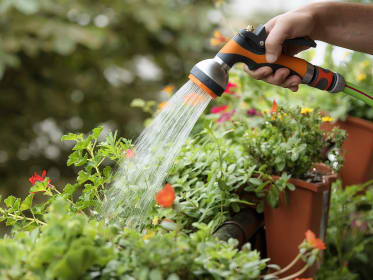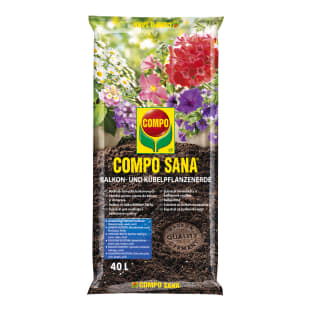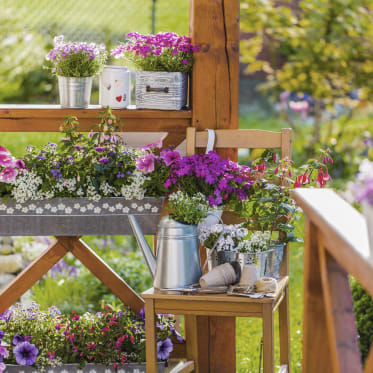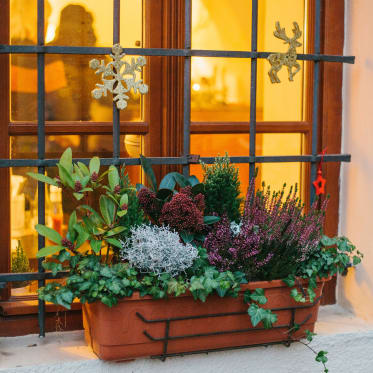Frequent search terms

- COMPO
- Guide
- Plant Care
- Balcony and potted plants
- What you can do for your balcony plants in the summer
Proper care when it gets hot and dry
What you can do for your balcony plants in the summer
Do you also look back at the exceptionally hot summer of 2018 with rather mixed feelings? While we couldn't get enough of the warm temperatures, the weather really took a toll on our balcony plants. Climate researchers agree that such dry spells will occur more often in the future. We reveal how you can prepare your green protégés for extreme weather conditions and minimise the risk of potential summer damage.

The best foundation: Good root penetration
Prevention is better than cure – this is particularly true when it comes to plant care. By choosing the right substrate, you can positively influence the healthy growth of your plants in dry periods. Our potting soil for balcony and tub plants contains a special water deposit that stores some of the irrigation water and dispenses it to the plants as needed. The soil stays moist for longer and needs to be watered less often.
Our COMPO tip
Place shells or stones on the soil surface to prevent quick evaporation and protect against overheating. If you use terracotta tubs, you can also wrap these with damp cloths.

Healthy plants are more resistant to dry conditions
Nutrients are a secret weapon when it comes down to protecting plants from heat and dryness. But the problem is that fertilisation is either not started at all or too late. Our range includes special fertiliser pellets with sheepwool that can soak up a lot of water at the beginning, improving humification and the plants' supply of nutrients and water in dry periods.

Do you prefer resilient plants?
A long-term measure that will benefit you in hot and dry periods: Plant varieties that can better tolerate the heat. If you like to keep things traditional, you can opt for geraniums, petunias or lavender. Osteospermum and fairy fan-flowers also do well in the sun. It goes without saying that Mediterranean plants, such as citrus trees, oleander and rosemary, also enjoy warm temperatures. A parasol or an awning will protect plants from intense sun rays.

The number one rule for heatwaves: Water intelligently
In hot weather in particular, it is important to water plants in the morning. This allows the plant to dry quickly and the dewy soil absorbs the water well. If you were to water at noon, the leaves could burn and watering in the evening poses the risk of the plants remaining wet and spreading fungal diseases more quickly. It is better to water thoroughly than more frequently on the surface. Plants can only form deep roots and use water reserves when the soil is regularly soaked. As moist soil can better absorb water, you should first only water the soil briefly and then water it thoroughly after ten to fifteen minutes. It is best to use rain water. This has a positive effect on your water consumption, the environment and also benefits the plants, as it is free from lime and has a pleasant temperature.
More about caring for balcony plants






